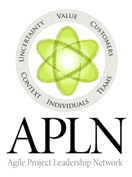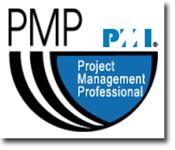 Another theme we are going to see throughout our book is the idea of individual and organizational learning. One of the most eye-opening ideas... but looking back one of the most obvious... is that people have to go through steps in the learning process. We can't come along and say... go be agile. We can't just explain what it means to be an agile leader and talk about the principles behind agile teams... we need an action plan.
Another theme we are going to see throughout our book is the idea of individual and organizational learning. One of the most eye-opening ideas... but looking back one of the most obvious... is that people have to go through steps in the learning process. We can't come along and say... go be agile. We can't just explain what it means to be an agile leader and talk about the principles behind agile teams... we need an action plan.
This idea hit me in the face like a sledgehammer a few years ago when I brought a new project manager into our organization. I spent hours talking to this guy about principles and patterns and how I wanted him to think about doing his work. What I really needed was to give him guidance on what to do... he would learn the principles and practices while DOING. Cockburn talks about the Shu-Ha-Ri principles... we have to go from having one way... to many ways... to blending ways. From apprentice... to journeyman... to mastery.
On some levels we have to start people off with practices... but practices that work in THEIR particular situation... not the situation we'd like them to have. We can't recommend agile practices that are not going to work in the organizational context in which we introduce them. Using that approach, we might be able to get pockets of agility... but what we REALLY need is sustainable organizational change. Pockets aren't good enough. It's up to us to create a context where... not just individuals... but entire organizations... can learn to be agile.
Dennis and I talked about the idea of single-loop learning and double-loop learning in last month's Cutter paper. The idea comes from Chris Argyris and Donald Schon writing about their research in the 1970's. Argyris and Schon looked at three elements of learning: Governing Variables, Action Strategies, and Consequences. Governing variables are the constraints we operate under and action strategies are the things we do to get our desired outcomes.


Governing Variable: We need better Project Predictability to meet the needs of our clients.
Action Strategy: To get better predictability we need to design and plan the entire project up front
Consequence: Projects are slower and more expensive then planned, have more customer expectation and product quality risk, and result in low trust people hostile environments.
In single loop learning, we go back and try to improve design and planning to manage the governing variable.
In double loop learning, we go explore the false assumptions we have made regarding the governing variable about how to meet the needs of our clients.
Here is my rather cynical response... Dennis' example is better:
Governing Variable: We need Product Owners assigned to every team
Action Strategy: Tell the Product Managers they need to turn into Product Owners and sit with the team.
Consequence: Product Manager/Owners are not able to dedicate their time to the team and we end up with no product owners and no documentation.
In single loop learning, we might try to pressure the organization to dedicate the product owner or maybe provide product owner training to our Product Managers.
In double loop learning, we go explore the false assumptions around the idea of the single-wringable neck and take a look at implementing product owner teams.
We see examples of single-loop learning and double-loop learning in both traditional and agile organizations. We believe that you have to intentionally create an environment for this kind of organizational learning to take place. We are going to explore some of these governing variables... we are going to look at our false assumptions... we are going to put together a framework that embraces this idea of double-loop learning and reinforces sustainable organizational change.
References:
Single loop and double loop learning discussion summarized from Infed.org, the images come from this site as well.






































